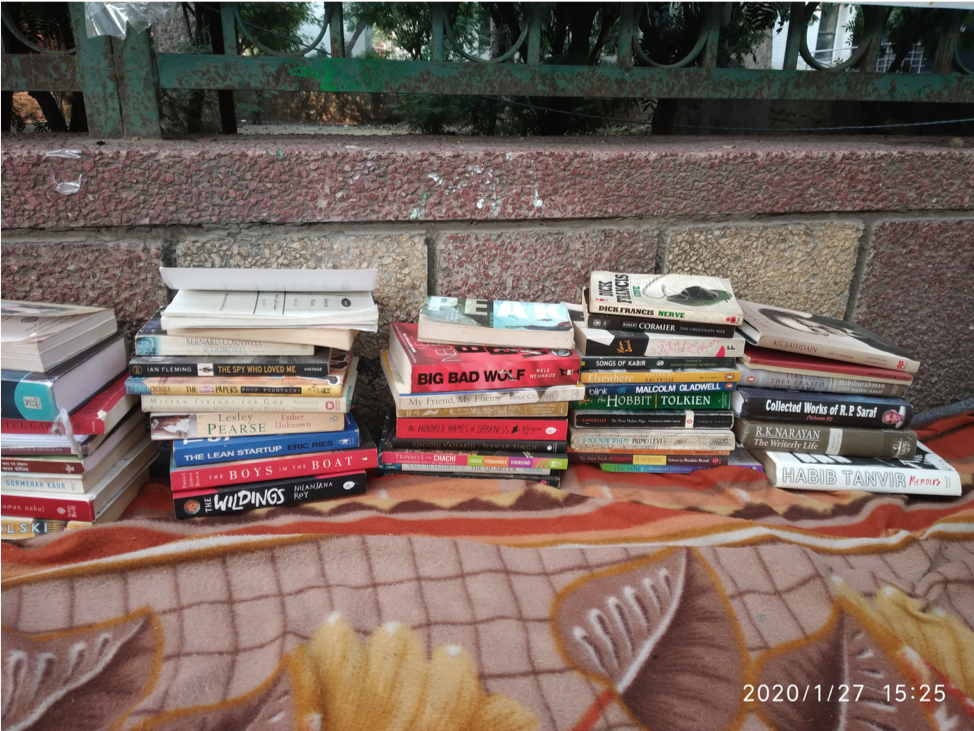Pavement Libraries: Protest, Politics, and Disruption
- After the Citizenship Amendment Bill (CAB) passed in both Houses of Parliament in India on 13 December 2019 to become the Citizenship Amendment Act (CAA), protests against the Act gripped the nation, particularly in the capital city New Delhi and Uttar Pradesh.
- An element of the protests has been the pavement library outside Jamia Millia Islamia university and at Shaheen Bagh is a symbol of more than just the Anti-CAA movement
- Traditionally, the pavement library has been restricted to the sidewalk, however, in the case of Shaheen Bagh, where a key road connects New Delhi, Noida and the rest of Uttar Pradesh, the library and the protests have been pouring onto the road and have cut off traffic, affecting commutes on the route.
On the evening of 15 December 2019, Delhi police entered the library of New Delhi’s Jamia Millia Islamia (JMI) University, attacking around 650 students inside with tear gas, injuring several among those present. The crackdown came in response to demonstrations against the CAA after the Bill was passed by both Houses of Parliament in India.
“The safest place of India is an institution and the safest place in an institution is the library,” said Rahman Manzer, a recent JMI graduate, adding that the police had vandalized a safe space. As a result of the suppression, JMI students were compelled to take to the streets the next day, setting up an outdoor library and protesting not just the Bill now, but also the police brutality they had faced, he added.

The history of pavement libraries and the Anti-CAA library
Protest libraries have been a salient feature of 21st-century movements, with examples including the People’s Library during Occupy Wall Street, the Maidan Library during Ukraine’s Revolution of Dignity, as well as the Gezi Park library in Istanbul.
The libraries outside JMI and at Shaheen Bagh have been there for seven weeks now, with protestors still occupying the areas, raising their voice and continuing the fight against the Act. At Shaheen Bagh, a movement that was started by mostly Muslim women now hosts people across religions. Parents bring their children to the site, while some stay overnight. What began as a sit-in to urge the government to repeal CAA has become a ground for social and political knowledge, with the books and documents at the outdoor library including George Orwell’s 1984, Martin Luther King Jr.’s autobiography, works by Franz Kafka and pamphlets of the Constitution.
While knowledge and literacy are important for suppressed groups, the primary goal is awareness among the common people, Manzer said.
Why are universities and their students a target?
“For the last five years, the main resistance against [Prime Minister Modi’s] government has come from students,” said Sagar Choudhary, a journalist who covers politics for Caravan. As a result, universities across India, and their students, have become targets for government pushback, he added.
In recent years, Aligarh Muslim University (AMU), Jawaharlal Nehru University (JNU) and Banaras Hindu University have seen their students voicing concerns against the ruling government’s policies and in some cases have faced crackdowns by the government in response.
However, there is an increasing element of hatred against Muslims since 2015, which has contributed to the targeting of institutions like AMU and JMI, where several Muslim students attend, Manzer added.
Indian Muslims’ concerns with the bill
According to Manzer, the Muslim community in India is fearful of the Act’s implementation in combination with the proposed National Register of Citizens (NRC), with the Minister of Home Affairs Amit Shah having linked the two on several occasions. What Manzer and others have called the “lethal combination” of the CAA and the NRC will disenfranchise Muslims in India, particularly those with ancestry from any of the three listed states where Muslims form a majority as the ruling Bharatiya Janata Party (BJP)’s stance is that only minority groups are persecuted in a state. Since 2015, Muslims have systematically targeted, with examples including a rise in religious violence, the repeal of Kashmir’s special status, and the hotly-contested Ram Mandir issue. The new immigration laws threaten to aggravate Muslims’ suffering, Choudhary explained, adding that there is an existential crisis due to fears of statelessness.
When protests disrupt civilian life
While the protest libraries in other movements have usually been situated in low movement zones, such as the sidewalks of New York City’s Wall Street or Istanbul’s Gezi Park, the anti-CAA protests, particularly at Shaheen Bagh, have gone beyond the pavement and onto the road, blocking traffic and disrupting commutes.
For those going to schools, colleges, and offices, the closed-off roads have meant longer travel times, said Saswat Biswas, a Delhi University student. The demonstrations have led several small businesses and shop owners in the area to temporarily close their stores, many compelled to continue paying rent without earning any money, he added.
What’s next?
The protests look unlikely to end in the near future, as the country remains divided on the new citizenship law, with demonstrators unfazed. “Until a solution comes, and the law is amended [to include all persecuted groups instead of the current stipulations] or repealed,” nothing would change, Choudhary said.
Note: This article originally appeared on Interlaced.
